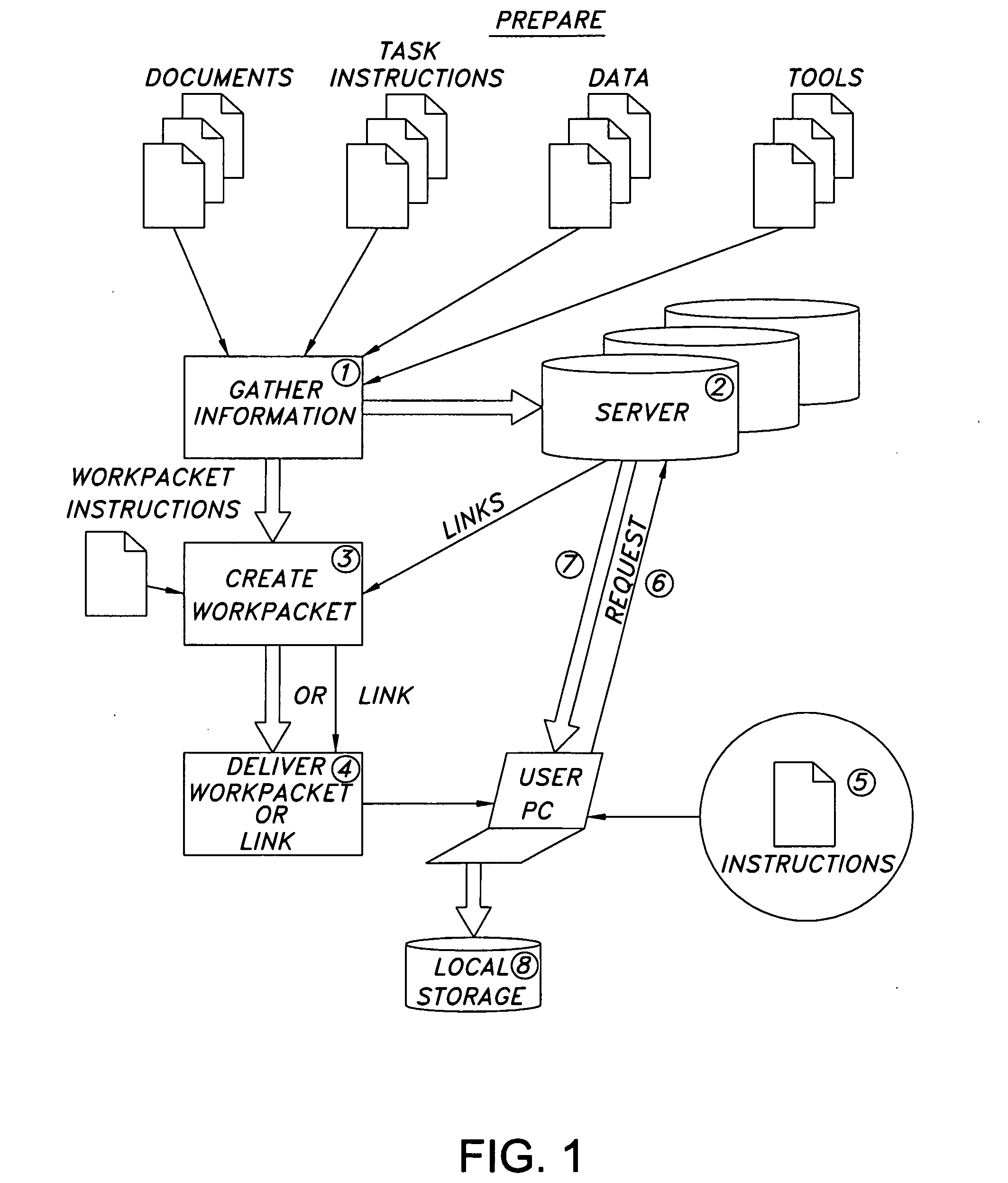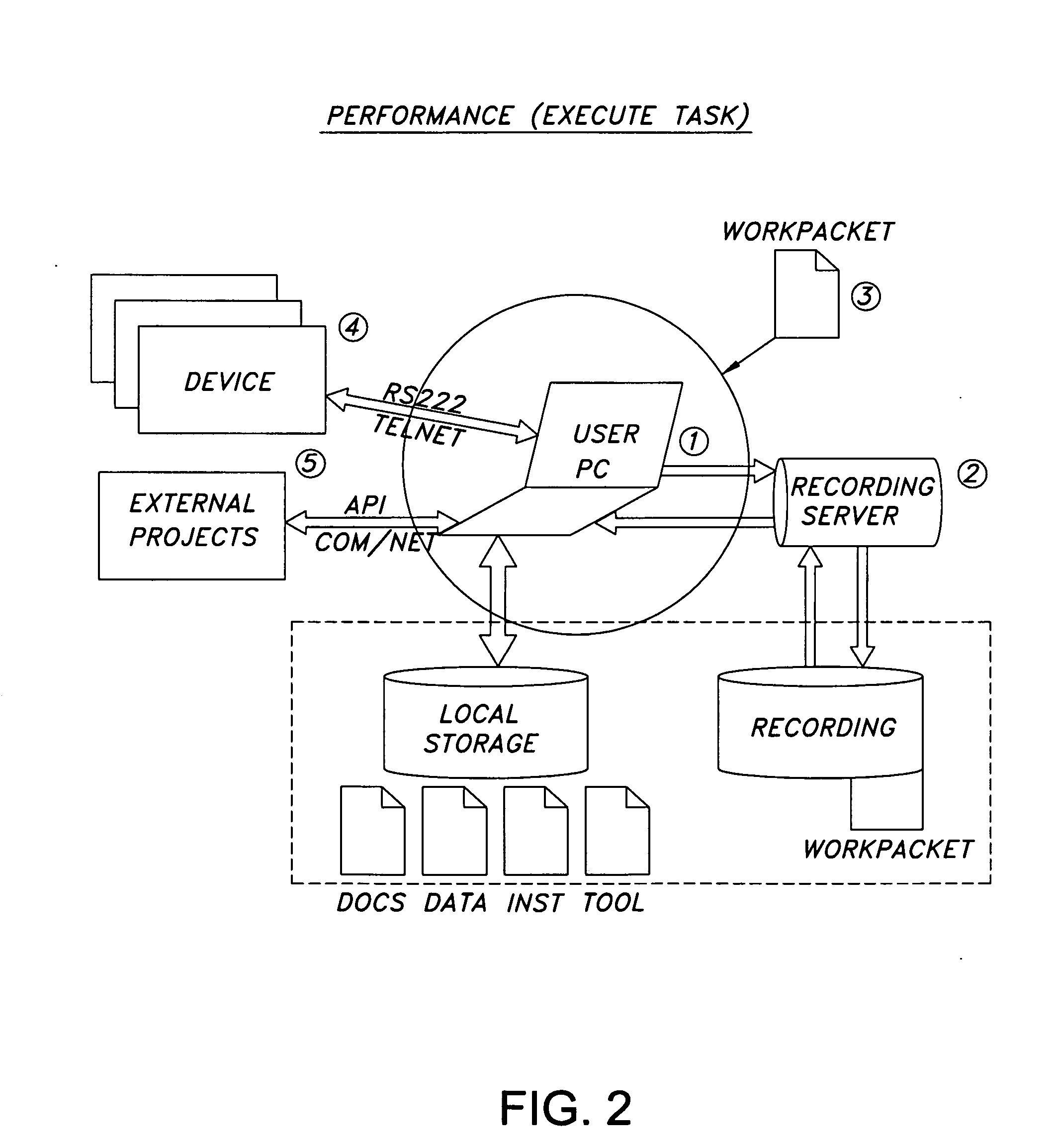These technicians are limited to performing these tasks to the equipment for which they have received training.
Furthermore, technicians are usually physically limited to a defined geographic region.
Finally, hiring or training technicians to such a high level of expertise is very expensive.
These actions, often conveyed via Telephone, e-mail, or other in-house systems, are time-consuming and subject to error.
Since technical staff has to be physically close to the location of the problem or task to be performed, companies are often forced to build geographically dispersed offices or to use sub-contractors, both of which
cut into profit margins drastically.
In addition, due to the complexity of tasks and the high degree of training necessary to perform most
field service tasks, it is usually necessary to employ individuals with a high degree of technical skill and aptitude.
Often, these instructions are complex and difficult to write and / or understand.
If either the
technician does not have access to the appropriate tools,
documentation,
software, equipment, or contact information; or he forgets to bring something he needs, he is likely to fail to complete the tasks itemized in the Work Order.
However, not all technicians will be able to address all problems or issues that may arise for a complicated piece of equipment or a complex task.
Furthermore, to
train each
technician to be able to address all possible tasks is prohibitively expensive in terms of both time and money.
Furthermore, the Work Order would not typically include a
list of parts, tools, or other resources needed to complete an assigned task.
Finally, non-technical problems may arise which prevent a technician from completing a task.
These can include: scheduling problems such as arriving at the incorrect time or date, location problems such as improper directions or address information being given to the technician, and human interface problems such as the technician not being provided with the correct contact individual at a job site.
All of these non-technical problems can still act as a serious impediment to a field service technician completing his tasks.
For these reasons, and any number of additional reasons, the technician may not be able to complete the tasks assigned.
When this happens, the technician will need to go through a laborious and time-consuming process to obtain the necessary resources to complete the tasks assigned.
Contacting the appropriate technical assistant is an especially difficult task in many instances and may require several
time consuming cycles of communicating what tasks are being performed, what the issues are, what steps have been taken up to this point, and who has already been contacted in an attempt to remedy the problem.
Once the appropriate help-
desk or expert resource has been located and briefed, a tedious, work intensive and inefficient cycle of
troubleshooting begins with the help-
desk or expert asking the technician to perform some task and
relay the results to the helper.
This produces an inefficient and redundant support process where the technician must repeat, possibly several times, the nature of the problem encountered as well as the possible solutions attempted by other support personnel in the previous iterations of the support cycle.
Given that the issue is eventually resolved, it is likely that other technicians will run into the same or similar issues, particularly on large projects where the same tasks are to be performed in numerous sites.
Some problems are so difficult that help is needed from more than one person at the same time.
Therefore, a
telephone call may not always suffice in providing the technical assistant enough information to resolve a problem.
Another common possibility is that the same or similar issue does occur, but not until after the help-
desk or expert resource that had the “institutional knowledge” of how to
handle the issue is no longer available: the solution now has to be relearned.
This situation can be encountered where a single individual or limited group of individuals encounters a specific problem and develops a solution for the problem without documenting the solution, or documents it in a way that is not distributed widely within the department or is documented in such as way that it is not easily understood.
Thus, if the individual or small group of individuals is not available at a
specific time to address a problem then the value of their solution is wasted.
Furthermore, even if the individual having the pertinent institutional knowledge is available, the solution to the problem may not have been properly documented or it may have been some time since the previous occurrence of the same problem and therefore the solution may be hard to retrieve.
The mere existence of the knowledge is wasted if it is not easily and efficiently accessed.
Thus, there is a problem with retaining knowledge of what went wrong in the field, why it went wrong, and what the correct solution in previous occurrences.
This is often referred to as “brain drain”, where specialized information on how to perform tasks is lost when key personnel leave the company.
Often, simple logs are used, but these logs are often neglected or mislaid, and therefore lose their utility.
Time sheets (paper and / or electronic), emails, in-house timesheet systems, and electronic expense reports are all partial solutions, but it is difficult to keep a consolidated record, particularly associated with the work actually being done.
This however, can lead to errors and oversights.
The current model for providing field service support is inefficient and does not assure high levels of satisfaction for the
technical service contractor or their customers.
The issues above represent
resource management problems that translate to additional expenses for the
technical service contractor due to increased time in completing an assignment resulting in lost profitability and
list customers.
 Login to View More
Login to View More  Login to View More
Login to View More 


